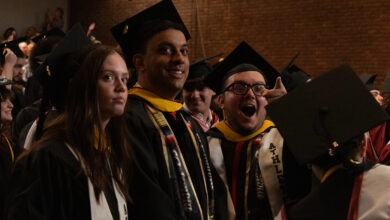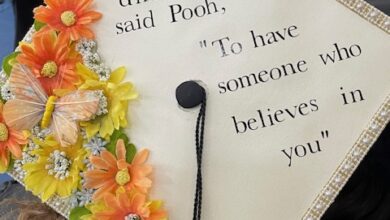BEHIND THE LENS: THE WHO, WHAT, AND WHY OF PHOTOGRAPHY
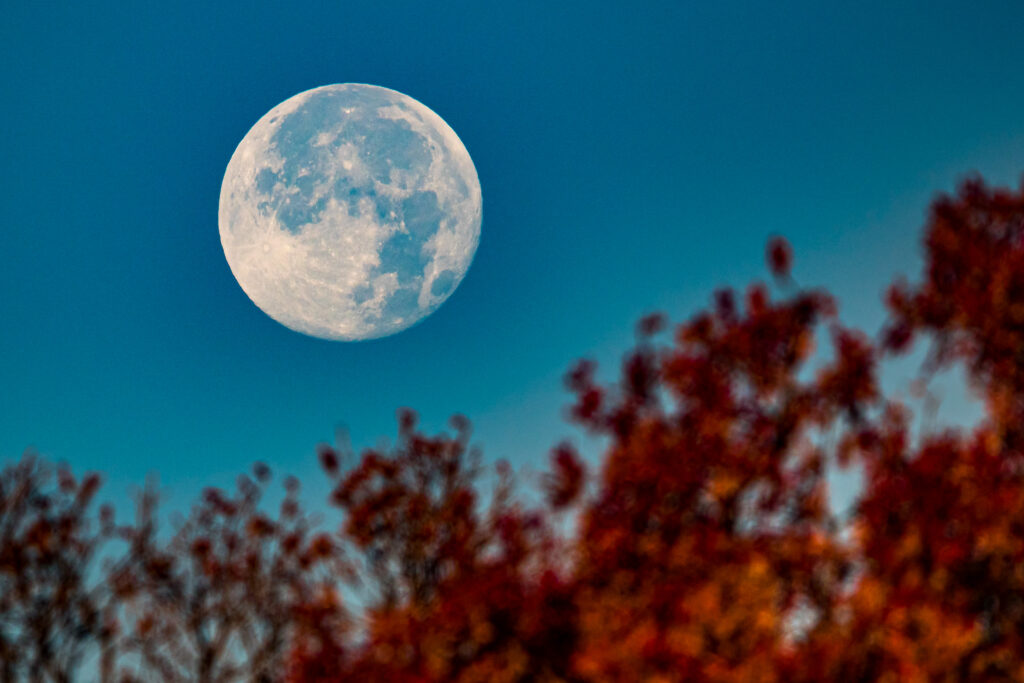
By Sage Albanese
Every day, we’re surrounded by photos, whether scrolling on social media, reading a magazine or newspaper, watching TV, or capturing a moment yourself. Photography is an essential component of the human experience. But who is behind the lens, and why did they choose this specific art form? It’s rare for people to understand how much goes into a simple photograph or what clicked for someone wanting to make that hobby or passion their full-time job. Hundreds of different types of photography exist worldwide, and millions of photographers behind those cameras create those photos.
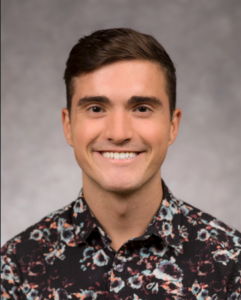
For Troy Hallahan, founder, and photographer of Troy Hallahan Photography, it was a family affair. “I have two older sisters who always wanted the coolest and freshest MySpace and Facebook profile pictures. Being the younger brother [of them], I was obligated to be their personal cameraman,” said Hallahan. “I already had a background in art, drawing specifically, so when I got my hands on a camera, my passion for creating strong visuals just took off.”

For others, though, photography was a favorite hobby that turned into a lifelong goal. “I was always a “hold onto the memories” kind of person, so I was always looking to capture the memories of life,” said Vanessa Tewes, a student photographer. “I had a rough patch in my life where it was hard for me to find joy in things, so I started taking more nature pictures to capture the beauty of the world around us as a way to enjoy and be grateful for the little things.”
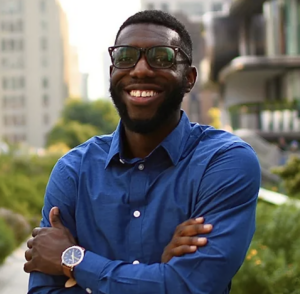
Former Spectrum 1 NY News assignment editor and photojournalist Donovan Alexis can relate to Tewes’ statement. “One of the things that drew me, particularly to photography, was the fact that I’m somebody that’s visually stimulated. When it comes to looking at all aspects of life, being able to capture life through a lens was very appealing to me.”
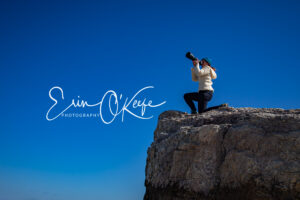
Erin O’Keefe, a nature photographer based on Long Island, said that she’s always been interested in photography, but once she got more hands-on experiences, there was no turning back. “I started to take photography more seriously when I was taking a photography class in high school. I loved shooting on film and developing it in the darkroom.”
Discovering Your Photography Style
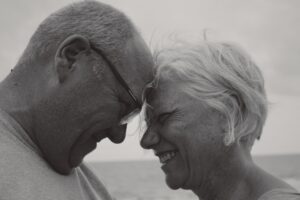
When it comes to photography, every photographer has their “niche.” There are millions of different forms of photography for photographers to choose from. The possibilities are endless for sports, concerts, live-action, stills, landscapes, weddings, and news. So how could someone choose just one? Well, you don’t have to! Sometimes, photographers find and run with one focus, but many other photographers find serenity in the chaos of multiple subjects. Tewes said that she eventually wants to become a concert photographer. However, since she’s still a student and just getting her foot in the door, she’s comfortable experimenting with various types of photography. “I don’t exactly have a specific style of photography. Being that I do this not only as a hobby but as a job, I feel like I am still finding my style”.
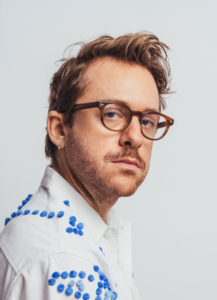
For others, though, their focus is their passion. Hallahan primarily works with members of the LGBTQIA+ community, as he is also a member of the community. He said that when he came out as gay in his first year of high school, he struggled to find other connections with similar individuals. “It’s been a way for me to connect with people who have similar backgrounds as I do, and I’ve been loving every moment of it. I strive to bring representation in the arts because it’s something I wish I had more of when I was younger.”
It’s no guarantee that you’ll find your style right off the bat as soon as you pick up a camera, though. Photographers find their style of photography through a combination of experimentation, exploration, and experience. A few steps a new photographer can do to help narrow down their options are to learn the basics, explore different genres, experiment with different techniques, study other photographers’ work, and keep practicing!
Finding the Perfect Camera
Finding the perfect camera is another struggle photographers will face when it gets to that time. The average shutterbug assumes all cameras are the same and all do the same thing. And while yes, at the end of the day, all cameras take a photo, each camera is very different. For example, some cameras are better for sports than stills or for nature than fashion.
The top three most popular camera brands in the United States are Canon, Nikon, and Sony, so it’s no surprise that we see each of these brands is used by Hallahan, Tewes, Alexis & O’Keefe, who are all in very vastly different areas of photography. Hallahan uses a Sony A7 III, Tewes uses a Canon Rebel T6, Alexis uses a Nikon D7500 DSLR, and O’Keefe uses Canon 6D Mark II for her landscape and nature photos and a Canon 1DX and Canon 7D Mark II for sports & wildlife. There are cameras for all experience stages and budgets that will get the job done, you do not need thousands of dollars to get your jumpstart in photography, but a price tag does come when you eventually want to up your game and shoot higher-quality photos at a faster pace, like at a sporting event. If you are specifically interested in sports cameras, read more about the options here.
Social Media
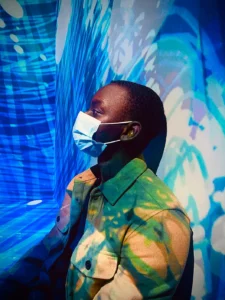
Social media has become a game-changer for photographers, allowing them to showcase their work to a global audience. Today, photographers can use social media platforms such as Instagram, Facebook, and Twitter to build their brands, connect with potential clients and collaborators, and create communities around their work. With features like hashtags and geotags, photographers can easily reach new audiences and gain exposure for their work. Social media also allows photographers to receive instant feedback on their work, helping them refine their style and improve their craft. For photographers, social media is essential for building their careers and sharing their creative vision with the world.
LINKS: Follow Troy Hallahan, Vanessa Tewes, Donovan Alexis, and Erin O’Keefe on social media.
The Keys to Quality Photography
Getting into photography can be a fun and rewarding hobby or a career, but many steps should be considered before investing the time and money. “Trust. The. Process! Having a keen eye while shooting is critical, but the magic comes in post-production. You may not be feeling the images when shooting but trust the process and understand that the images can be edited to get the final outcome you’re truly looking for,” said Hallahan.

Considering factors like framing, the rule of thirds, leading lines, and symmetry can create an aesthetically pleasing image as well. “Lighting can make or break a photo. It sets your mood and vibe. I would also say good prompts and anticipation. You need to anticipate what might come next or where a person will move when you’re shooting live events. Good prompts meaning if you’re doing a specific photoshoot, you have good prompts to get a real emotion from your model,” said Tewes.
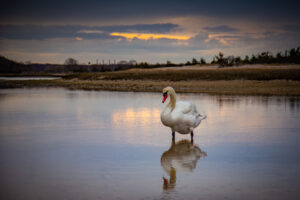
O’Keefe also agreed with Tewes’ statement about shooting nature photos. “Lighting probably has the biggest impact on a picture. Good lighting can make a mundane subject stand out. For landscape photos, the best time of day to shoot is usually Golden Hour (the hour after sunrise and the hour before sunset). I try to find a new or unique angle to shoot. I can shoot the same location quite often, but I always try to find a way to make the photos unique.”

Exposure is also a big selling point in photography, and it refers to how much light is allowed into your camera sensor. Consider adjusting your shutter speed, aperture, and ISO to get the proper exposure for your subject and lighting conditions. Alexis brought up an essential and basic aspect of getting that perfect shot. “I think timing, and by that, I mean… you also want to be in the right place at the right time, so making sure that you’re positioned in the area where the news is happening. Because oftentimes, when we get to the scene of a story, things are still developing. So, as it’s happening, you want to make sure that you are getting the right shots at the right moments.”
Capturing the Human Experience
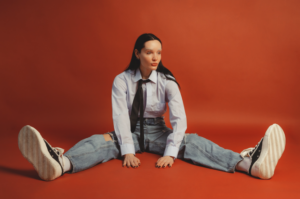
Photographers play a critical role in capturing the world and documenting our history, culture, and personal experiences. They use their creativity, technical skills, and vision to tell stories, evoke emotions, and inspire audiences. Whether it’s a stunning landscape, a powerful portrait, or a compelling news photo, photographers capture moments in time and make them last forever, bringing attention to social issues, challenging stereotypes, and celebrating diversity. They also help us see the world in new ways, encouraging us to appreciate the beauty and complexity of our surroundings.




